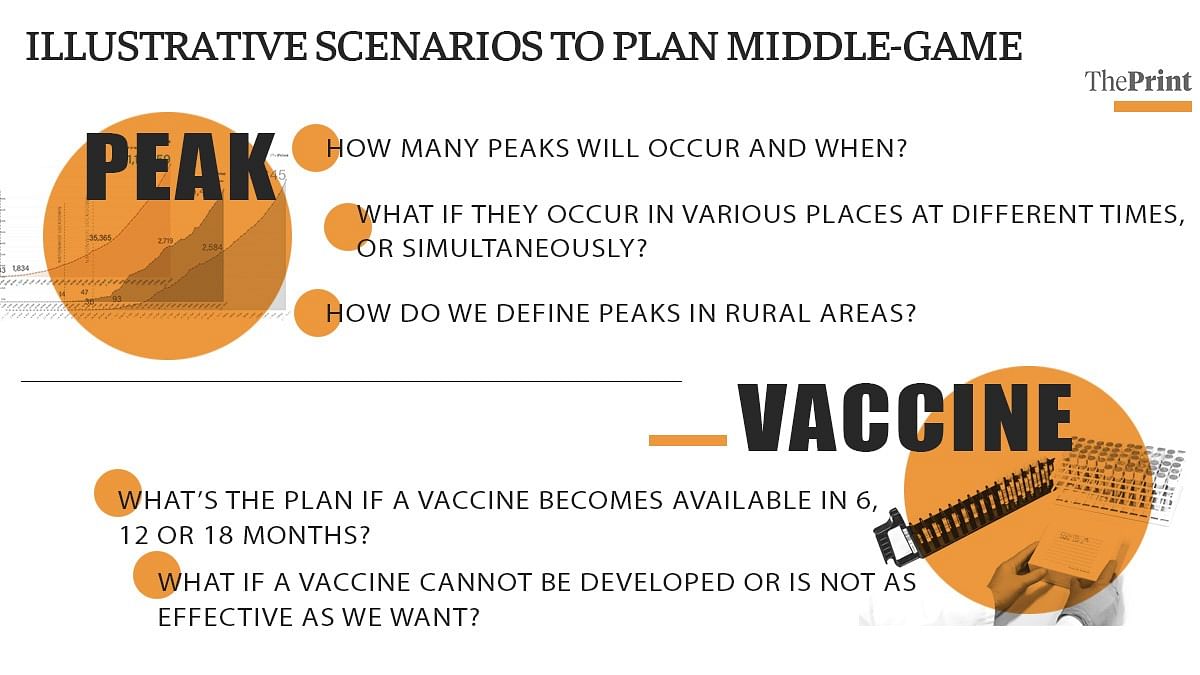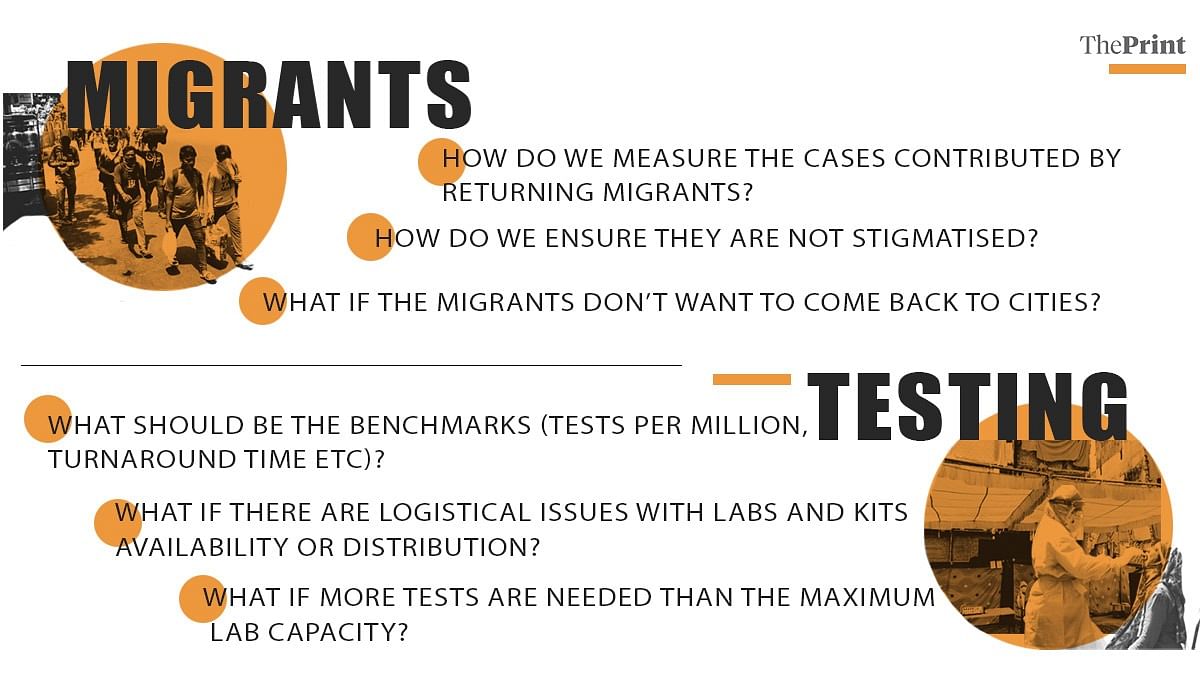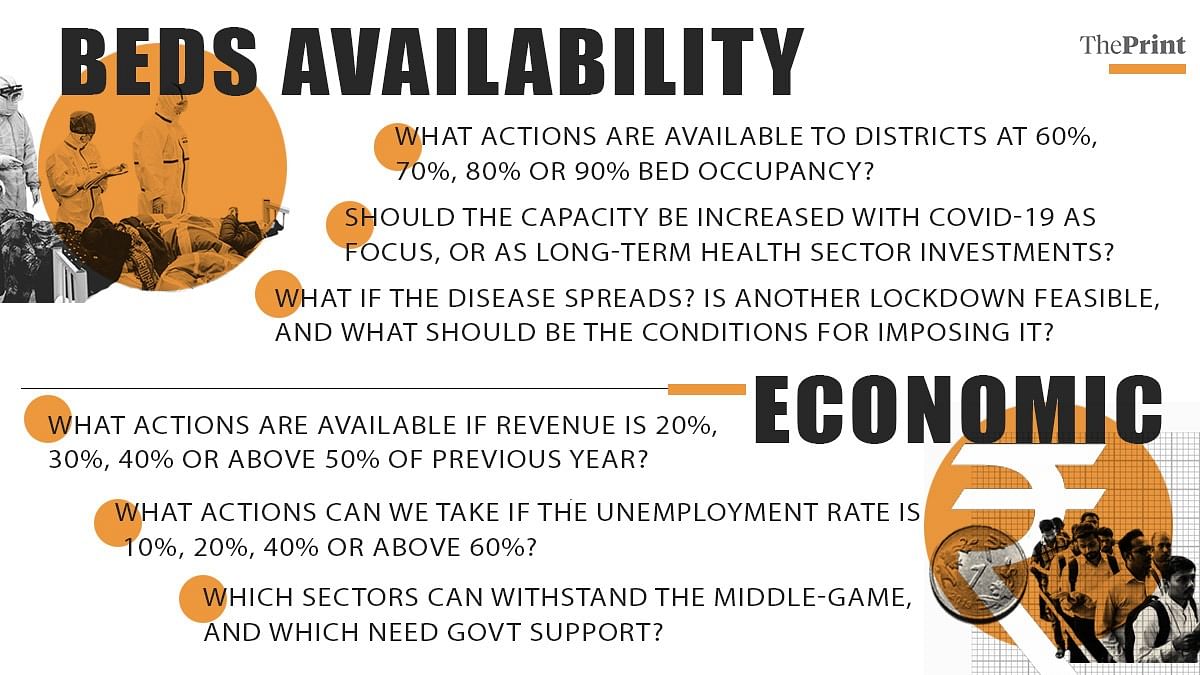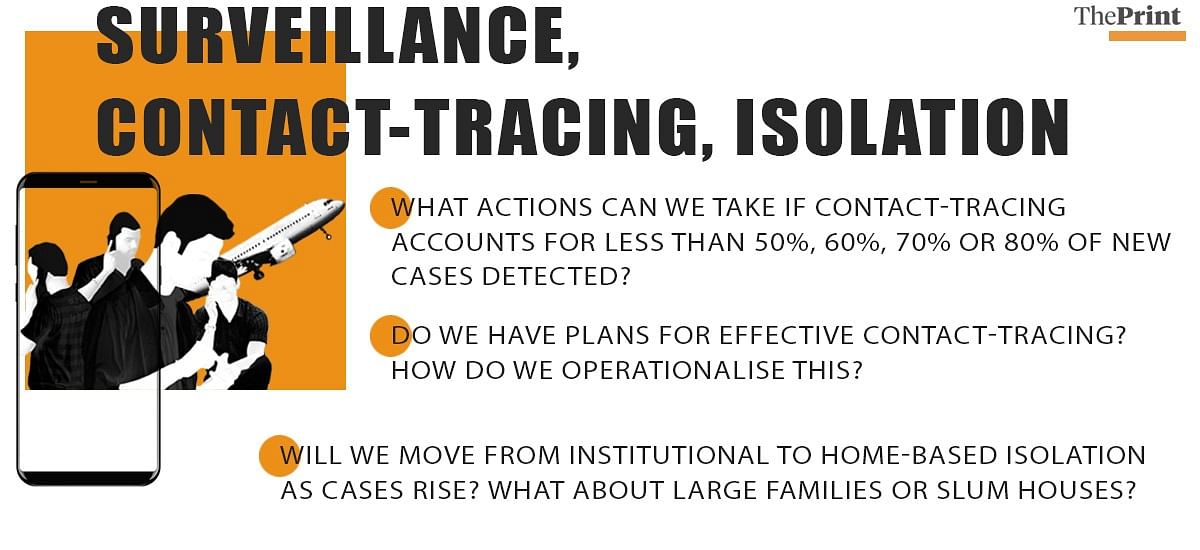India is beginning to show early signs of Covid-19 response fatigue in the initial phase of lockdown 5.0 or ‘Unlock 1.0’.
It is quite evident that the public has been bombarded and desensitised (quiet unintentionally) to all Covid-related matters in the past few months. The media, too, appears to be moving on to other stories like the components and contours of the economic stimulus package, or Chinese incursions. Daily media briefings by the Ministry of Health and Family Welfare have been discontinued, and the government appears to have been drifting from one lockdown to another, without defining the benchmarks of success for each phase or revealing a long-term plan.
The migrant crisis has been so mismanaged that it defies logic and common sense, and reflects a disdain for human lives at their most vulnerable. Even the economic stimulus package had no clear long-term vision.
The government seems to have lost focus, and appears to be leaving key decision-making to states and districts, but has not provided an all-encompassing governance framework to coordinate the response. Some decisions like running shramik trains and allowing domestic flights have been taken without consulting states or relevant stakeholders, or before guidelines have been issued. There is seemingly no sense of solidarity among states, or a unifying vision.
We welcome the move to decentralise decision-making, which is what we have advocated earlier, but we also need a game plan to coordinate the response nationally, and to come up with a long-term vision.
Covid-19 will test our tenacity, grit, resilience, and patience as a nation. India needs to carefully consider, plan and prepare for all possible scenarios that could arise out of the Covid-19 crisis.
Also read: Modi got all the credit for lockdown. Now, he wants states to share risk of unlocking India
Opening, middle-game and end-game
Moving forward, we need to visualise the Covid-19 response like a three-dimensional chess game, with ‘health’, ‘economy’, ‘social’, and ‘political’ fronts being the multiple boards. Like in chess, we need to not only weigh the pros and cons of all the moves available to us, but also anticipate the opponent’s counter-move and plan the subsequent response. And, like in chess, there are three phases — opening, middle-game and end-game.
The past five months from the first case to the successive lockdowns can be construed as the opening phase. We decreased the rate of spread and confined a majority of infections to a few districts. The middle-game, which will be longer, can be envisaged to last from now until an effective treatment or vaccine comes to the market. The end-game will begin with deployment of the treatment or vaccine nationally.
We need to begin the middle-game by clearly defining the broad objectives to achieve. The government does not seem to have clearly defined the objectives of the lockdown. It sent a generic message that the lockdown will defeat coronavirus, which can be interpreted in myriad ways. Sometimes, it appeared as if the aim was to achieve zero cases, but then it was changed to building health capacity.
With the increasing number of cases, migrants’ woes, and testing numbers still low, many have argued that the lockdown is a failure.
A few continue to present a totally positive spin on the lockdown, by selectively presenting cherry-picked data on how India is faring with respect to the rest of the world.
We, like others, feel the lockdown had elements of success — like gaining time to build our health infrastructure, increase our testing capacity, focus on behaviour change and putting response systems in place.
This divergence of opinion can be attributed to not communicating the aims clearly beforehand, and metrics of evaluating success or failure. Therefore, we need to define the objective of the middle-game now.
Also read: First day of Unlock 1.0 – Delhi shuts its border, street food vendors back in Chhattisgarh
What are our objectives?
Are we aiming for a draw (mitigation of the virus) or a win (suppression of the virus)?
Do we accept that a certain number of cases will occur for foreseeable future and we will focus on managing these and prevent the health system from collapsing?
If so, what is the tolerance limit for our health capacity, and is the capacity equitably distributed across our country? Or, do we aim to bring the number of daily cases to near zero?
If the latter, what is our contact-tracing strategy? Have we strengthened our surveillance systems and isolation capacity? Or, should it be a mix of both, and if so, what are the quantitative thresholds to move from one to another?
What are the economic and social objectives to aim for in the next phase?
We need to conduct a series of thought experiments by enumerating all scenarios that can play out, and the options available to address them. We need to ask questions on how different things can pan out.




Then, we need to use this to develop complex matrices of scenarios and a game plan for each one, with contingency plans at specific quantitative thresholds built in. We should communicate our options, approaches, and plans more openly and transparently. This will instil confidence in the public, boost their morale and help seek active participation.
Finance Minister Nirmala Sitharaman said: “Any assessment can only commence after the lockdown is lifted fully; there’s a lot of uncertainty.”
Uncertainty by itself should not be an excuse not to plan, but more of a reason to have a well-thought-out network of plans. Unpredictability is more corrosive than uncertainty. This policy of having no policy reveals a fatalistic mindset, kills the confidence in response, and subdues the animal spirit. Having an elaborate plan, which is substantive and not superficial, conveys to the public that the government is proactive, ahead of the pandemic, and in control of the situation.
Also read: Sensex climbs to 3-month high on hopes that ease in lockdown will reboot economy
Presence of mind
The next requirement is to maintain presence of mind when the best-laid plan goes awry — the government must assess the situation, think on its feet and take corrective action so that the main plan is not affected.
Lockdown 1.0 set in motion the migrant crisis, but the government was unable to manage it, underestimating the size of crisis, discounting the desire of migrants to return home, disregarding their reasons, overestimating the risk of national spread, and misreading the political blowback.
The governments should be able to do rapid assessment after major decisions and take corrective actions. For instance, once the shramik trains started, they should have monitored the situation on how many new cases are arising from train returnees. By not assessing these parameters, both the central and state governments leave room to blame one another and escape accountability.
When more relaxations are announced, like when malls open or when educational institutions are allowed to restart classes, the government should measure the mobility increase, social distancing adherence, and impact on the rate of increase in cases. The data stream should be more disaggregated and allow the government to estimate risk of each decision. This will aid in taking prompt remedial action based on data.
Also read: The night curfew in unlock 1.0 is outdated. Indians still think ‘bad things’ happen in the dark
Public support
The government does not seem to trust the public, and wants to take decisions on people’s behalf (such as implying that increased testing will create panic, suppressing ILI surveillance data, misclassifying or not reporting deaths). Community participation, what some call the social vaccine, is most critical since restrictions are being relaxed just when we have the highest daily cases, and people are keen to get back to a new normal as quickly as possible.
The public needs to be an active participant in the management of the middle-game. The government should seek support by having honest conversations about community transmission and laying down cards on the table in terms of all scenarios, risks involved, and options. It should create hope by showing potential paths out of the labyrinth.
The next phase has been termed as ‘returning to a new normal’ and learning to live with the virus. If the government lays out all scenarios, proposed actions and reasons for those actions systematically, and gains public support for the same, that could be its defence against accusations that it is bringing in unnecessary reforms under the guise of pandemic response.
It will also compel the government to take action and not seek refugee under the umbrella of “uncertainty”.
Our middle-game, and how we chart it, will define what we can look forward to over the next few months and beyond — a consolidated effort based on adequate planning, partnerships and precise data, or a continuation of status quo.
Given the novel nature of Covid, we may build the boat as we sail, but at least we should chart potential routes till the end-game begins.
Dr Manjunath Shankar is a public health specialist, health economist and disease modeller. He tweets at @MonJunNot.
Dr Anant Bhan is a researcher in global health, bioethics and health policy. He tweets at @AnantBhan.
Also read: Lockdown flattened the wrong curve — GDP instead of Covid: Rajiv Bajaj tells Rahul Gandhi




The Shramik How can u say taht the states were not consulted. trains were demanded by Mr Uddhav Thakare and Mr Gehlot. The migration was motivated by Mr Kejrival.It was captain Arminder Singh who tried to prevent the migration and more or less succeeded . This is about the consulting the states.
Regarding the economic proackage what is your alternative plan pl. ?